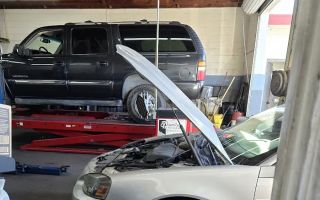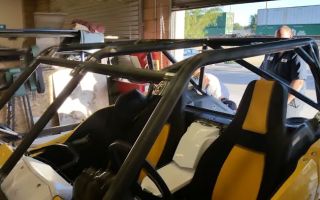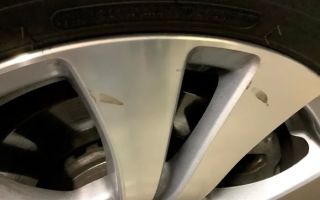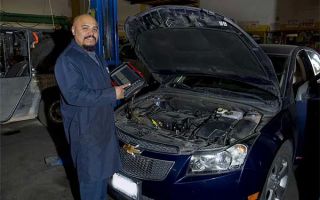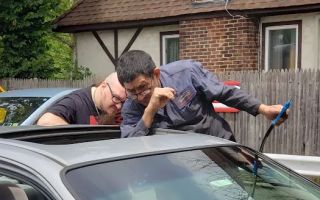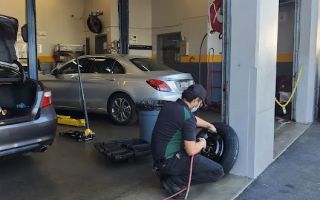How to Replace a Broken Cabin Filter: A Step-by-Step Guide for Vehicle Owners
- What is a Cabin Filter?
- Why Your Cabin Filter is Important for Your Car’s Performance
- Signs That Your Cabin Filter is Broken
- How to Replace a Broken Cabin Filter
- Real-Life Case Studies: Dealing with Cabin Filter Problems
- Maintaining Your Vehicle and Preventing Future Cabin Filter Issues
- When to Seek Professional Help for Cabin Filter Replacement
1. What is a Cabin Filter?
A cabin filter is an essential component of your vehicle’s air conditioning and ventilation system. It filters the air that enters the cabin through the heating and air conditioning system, removing dust, dirt, pollen, and other contaminants from the air you breathe while driving. A clean cabin filter is crucial for maintaining good air quality inside the car, especially if you suffer from allergies or respiratory issues.
The cabin filter is typically located behind the glove compartment or under the dashboard, depending on the make and model of your car. Over time, it can become clogged with debris and contaminants, reducing its effectiveness and affecting your car's air quality. A broken or clogged cabin filter can cause a range of issues, including reduced airflow, unpleasant odors, and decreased air conditioning efficiency.
2. Why Your Cabin Filter is Important for Your Car’s Performance
The cabin filter plays a critical role in ensuring that the air inside your car is clean and safe to breathe. A functioning cabin filter helps protect your vehicle’s air conditioning and heating systems from debris, reducing wear and tear on these components. Without a clean cabin filter, dust and dirt can accumulate inside your car’s vents, leading to poor air quality, allergic reactions, and a less comfortable driving experience.
Furthermore, a clogged cabin filter can negatively impact your car's performance. When the filter is blocked, it reduces the airflow through the ventilation system, making it harder for the air conditioning or heating system to work efficiently. This can lead to longer cooling or heating times, increased fuel consumption, and unnecessary strain on your car’s HVAC system.
3. Signs That Your Cabin Filter is Broken
There are several indicators that your cabin filter may be broken or clogged. These signs are easy to spot and can save you from further damage to your vehicle’s HVAC system. Here are some common symptoms to look out for:
- Weak Airflow: If you notice that the air coming from your car’s vents is weak or doesn’t blow at full strength, your cabin filter may be clogged, restricting airflow.
- Unpleasant Odors: A musty or foul smell coming from the vents often indicates that the cabin filter is dirty or moldy. A clogged filter can trap moisture and dust, creating the perfect breeding ground for mold and bacteria.
- Increased Window Fogging: If your windows tend to fog up easily, it may be due to reduced airflow caused by a clogged cabin filter. A clean filter ensures that the air circulates properly, reducing humidity inside the car.
- Decreased Air Conditioning or Heating Efficiency: If your vehicle’s air conditioning or heating system isn’t working as efficiently as it should, a clogged cabin filter could be the cause. The system has to work harder when airflow is restricted.
4. How to Replace a Broken Cabin Filter
Replacing a broken cabin filter is a simple task that many car owners can do themselves. Here’s a step-by-step guide on how to replace a broken or clogged cabin filter:
- Step 1: Locate the Cabin Filter: Depending on your car’s make and model, the cabin filter is typically located behind the glove compartment or under the dashboard. Check your owner’s manual for the exact location.
- Step 2: Remove the Old Cabin Filter: Once you’ve located the filter, remove the cover or compartment panel that’s holding it in place. Carefully pull out the old filter, noting its orientation (which way the airflow is directed) so that you can insert the new one correctly.
- Step 3: Clean the Filter Housing: Before inserting the new filter, use a vacuum or damp cloth to clean out any dust or debris from the filter housing. This will help ensure that the new filter functions properly.
- Step 4: Insert the New Cabin Filter: Insert the new filter in the same orientation as the old one, making sure it fits snugly into the housing. Replace the cover or panel to secure it in place.
- Step 5: Test the Airflow: Once the new filter is in place, turn on the car and check the airflow from the vents to ensure everything is working properly. You should notice improved air circulation and air quality immediately.
5. Real-Life Case Studies: Dealing with Cabin Filter Problems
Sarah, a car owner from California, noticed that her car’s air conditioning system wasn’t working as efficiently as it used to. After trying to troubleshoot the issue herself, she discovered that her cabin filter was clogged with dust and debris. After replacing the filter, Sarah immediately noticed an improvement in airflow and temperature control. Her air conditioning worked faster and more efficiently, and the musty smell from the vents disappeared.
John, a long-time customer of a towing and auto repair service, had to call for emergency assistance when his car broke down due to a clogged cabin filter. The filter had become so clogged that it put strain on his HVAC system, leading to overheating. After replacing the filter, his vehicle was back to running smoothly. This situation taught him the importance of regular car maintenance and cabin filter replacement to avoid future breakdowns.
6. Maintaining Your Vehicle and Preventing Future Cabin Filter Issues
Regular vehicle maintenance is key to preventing cabin filter issues. It’s recommended to check and replace your cabin filter every 15,000 to 30,000 miles, depending on the manufacturer’s guidelines and your driving conditions. If you often drive in dusty or polluted environments, you may need to replace the filter more frequently.
In addition to changing the cabin filter, keep your car’s ventilation system clean by using air fresheners designed for vehicles and keeping the vents free of debris. Regular servicing by a professional mechanic can also help ensure that your car’s air quality remains high, and other essential components are in good working order.
7. When to Seek Professional Help for Cabin Filter Replacement
If you're unsure about replacing the cabin filter yourself, or if you're experiencing issues with your air conditioning or heating system that you can't resolve on your own, don’t hesitate to seek professional help. A professional mechanic or auto repair service can quickly diagnose the issue and replace the filter, ensuring everything is working as it should.
For reliable and quick automotive assistance, consider contacting Rescue & Towing for all your emergency roadside and vehicle repair needs. Our team is ready to help with cabin filter replacement and more, keeping your car in top shape and your drive comfortable.


